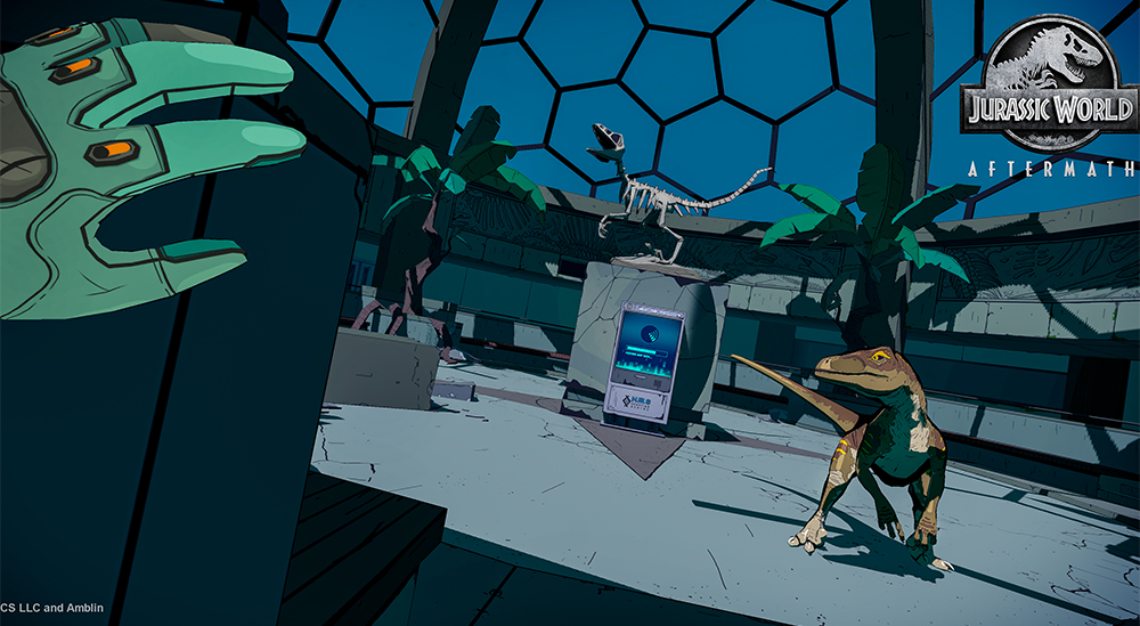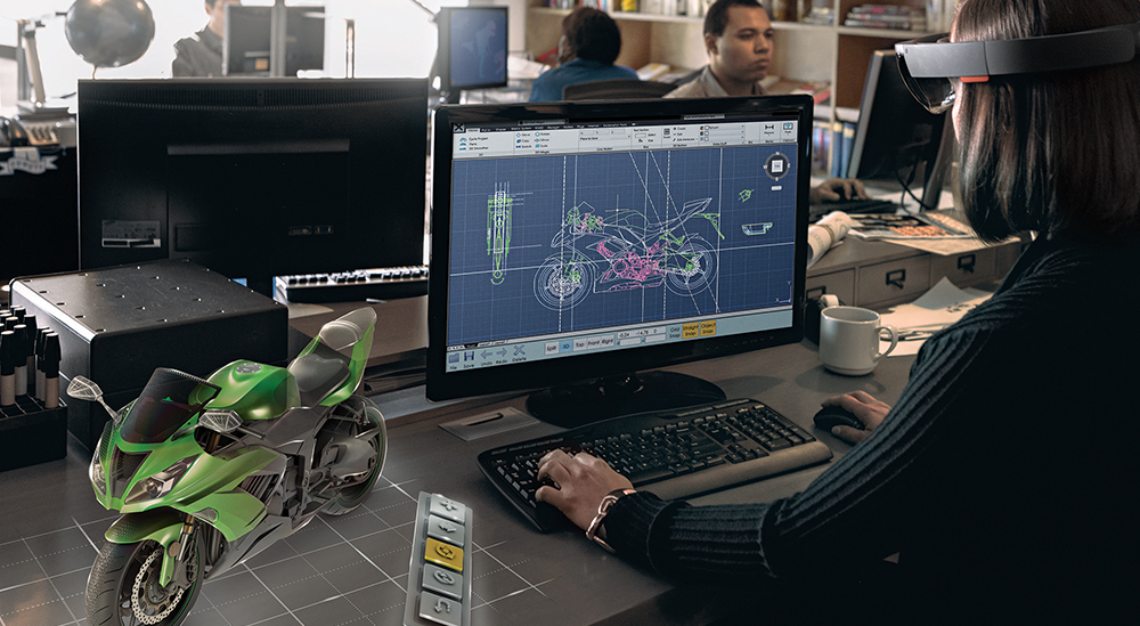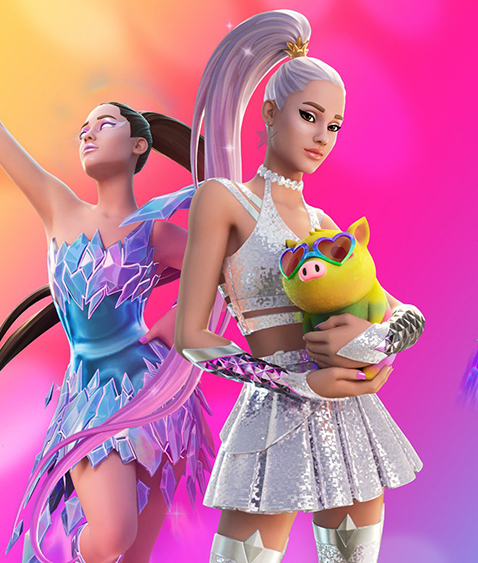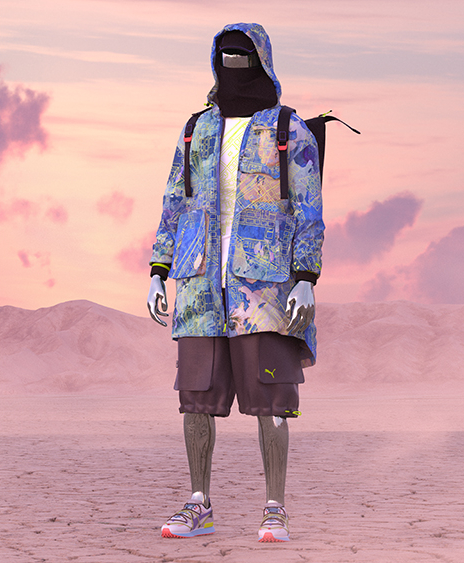How do you navigate an immersive virtual world that’s still mostly conceptual yet manages to generate billions of visits and even more dollars? Buckle up, because the deeper you go, the weirder it gets
One of the most buzzed-about destinations of 2022 is barely developed and widely misunderstood, starting with the fact that it isn’t, strictly speaking, real. And yet despite that existential disadvantage, the metaverse has managed to attract some of the world’s biggest brands, from Sotheby’s to the NFL, who’ve set up shop in the virtual universe to drop capsule collections, mint NFTs and auction off multimillion-dollar digital artworks. Along the way, the metaverse also became the hottest concert venue of pandemic-struck 2021, with A-list performances by Ariana Grande, Lil Nas X and Justin Bieber, all in avatar form.
Which is all fine, but what is it, exactly? The term itself, coined in Neal Stephenson’s 1992 sci-fi novel Snow Crash, is already headed for middle age, while the technological capability to actually create a fully immersive, interconnected virtual world remains a dream locked inside the mind of a yet-to-be-imagined super-computer. Still, the headlines keep coming, from Ralph Lauren’s winter-themed virtual fashion retail village to the hyper-realistic “meta-human” avatars that are being generated by Epic Games’ Unreal Engine digital creation studio. For a universe that doesn’t yet exist, the metaverse is surprisingly, if intangibly, real.
The Lay of the “Land”
Whatever you’ve heard about the metaverse, the reason you’ve heard of it at all is almost certainly Facebook’s October 2021 announcement that it would be investing “many billions of dollars for years to come” into the space, during a presentation in which CEO Mark Zuckerberg declared, with the fervent, unblinking enthusiasm of a newly initiated cult member, that the company was also changing its name—to Meta. Based on the rendered animations and demos shown during the announcement, the rebranded tech giant’s idea for its namesake future seems to boil down to a very boring Matrix taking place inside a Nintendo Wii, where you hang out, work and take exercise classes in fully immersive 3-D.
But such a hyperscale interconnected virtual world is only one of several possible futures for the metaverse, and it’s not everybody’s first choice. Right now, “the metaverse is kind of the merging of crypto and gaming,” says Karinna Grant, cofounder and co-CEO of the Dematerialised, a creator of and “marketspace” for digital fashion, accessories and collectibles. Crypto may provide some of the metaverse’s funding and much of its vocabulary, but gaming is its technological bedrock, a digital-native industry with billions of global users that’s been creating immersive universes for decades.
Some of the biggest multiplayer franchises, including Fortnite, Halo and Minecraft, have evolved into self-contained worlds with GDP-level in-game economies. Consider these titles and those like them—developer-controlled storytelling gameplay that also includes shared social spaces and experiences—as the moneyed establishment of gaming real estate in the metaverse. Of that group, Fortnite has locked down the most high-profile collaborations, activations and merch, including virtual Air Jordan sneakers and NFL jerseys, takeovers by Star Wars and Stranger Things and high-fashion avatar outfits—aka skins—and accessories designed by Balenciaga. Across the philosophical sound are the creator-led platforms, gamified world-building engines and marketplaces that don’t rely on any form of contest or competition. Chief among these is Roblox, a global online platform that’s like a massive virtual rec room and hangout, with over 10 million designers creating virtual experiences and items for its nearly 50 million average daily users.

“We have a generation of kids who have grown up with 3-D interactive gaming where they intuitively know how to socialise in these experiences,” says Roblox chief business officer Craig Donato.
Metaverse experiences such as Roblox, he says, are “fundamentally social—you’re doing them with other people.” For hundreds of millions of digital natives, hanging out together in virtual spaces “is a whole dimension to how they live their lives.”
Which explains the recent evolution of the virtual economy: As a sizeable portion of that gaming-first demographic ages into the stage where one begins to desire the finer things in virtual life, a more sophisticated marketplace has emerged to serve those tastes. Where once the majority of users went to Roblox primarily for game-type experiences, Donato says, “now people are going to see concerts, or to see the debut of a movie, or a fashion launch like the new Gucci line.”
It turns out that industries naturally pollinated by population density—art, fashion, retail, entertainment, gambling—have no problem blossoming without the actual, physical density part; the dollars are real even if the users are ciphers. Consider the metaverse in its current state, then, as the entrepreneurial outer fringes of a gaming industry grown so large its gravitational force is now swallowing entire other economies.
How Do I Get In?
When picturing the metaverse, many people imagine strapping on a virtual-reality headset and wandering around the type of bounded, orderly space we’re used to in the physical world: walking down a virtual main street, popping into a virtual boutique.
Certain elements of that scenario exist today, including VR headsets—the biggest brand, Oculus, is owned by Meta and popular for immersive 3-D games such as Beat Saber—as well as shared, simulated 3-D spaces as experienced inside Roblox or Microsoft’s Mesh for Teams enterprise application, accessed through that company’s US$3,500 HoloLens 2.
In actual reality, almost no one uses virtual reality to experience the metaverse, which is still almost entirely seen through the two-dimensional screens of gaming monitors, laptops, tablets and phones. Despite the revolutionary rhetoric around the future of the metaverse—and there’s a lot, much of it with a passion for decentralisation, to be anchored in a next-gen, block- chain-based internet iteration called Web3—the unsexy reality of the current metaverse is that it runs on Web 2.0 and is most often accessed through the portable little supercomputers we still think of as phones.

But despite the handheld convenience, getting around the metaverse is difficult. It’s basically Los Angeles, a vast sprawl of disconnected enclaves where everywhere you want to go is a world away and you can’t tell how old anyone really is. Now picture each neighbourhood operating somewhere between an all-inclusive resort and an isolated nation-state: Every platform in the metaverse requires its own sign-in and its own avatar; it sells its own nontransferable goods and services and uses its own fiat currency to do so. Imports are almost as rare as exports, which are nonexistent.
These are the present-day, small-metaverses that may one day be incorporated into a vast, interconnected capital-M Metaverse, with the theoretical ability to travel among worlds with all of your likenesses and inventory in tow, known as interoperability. There are many ideas of the future metaverse that don’t include interoperability on such a grand scale, or even at all, but if you want to understand all the headlines about luxury brands jumping into the space, consider that Meta, the seventh-largest company in the world by market cap, just committed to building its infrastructure.
Where Do They Keep the Valuables?
Art and retail are the current main attractions of the metaverse, and so far pretty much every newsworthy, big-name sale in the metaverse, from those Bored Ape cartoons infiltrating Twitter avatars to the unsanctioned “MetaBirkin” virtual representation of the famous Hermès handbag that sold for over US$40,000—currently the subject of a lawsuit by the French luxury house—has been an NFT. That means a “non-fungible token,” a term that concurrently refers to both the virtual creation and the corresponding certificate of ownership and authenticity (the token) that lives on the blockchain and is updated with each transfer of ownership.
NFTs are all the rage despite still being of limited utility. “One of the criticisms around NFTs and digital assets is how do you show people you have them? How do you showcase your trophy pieces?” Grant says. Whether you’ve purchased a virtual sneaker or a commissioned artwork, the typical answer is that you’re given access to an image file that can be posted to Instagram or Twitter or digitally overlaid in Snapchat—and often, that’s it.
Dedicated NFT viewers, such as those from the Mynt, Spatial and CryptoVoxels, are a more elegant and contextual solution. Cyberart studio Accursed Share, which most recently collaborated on a series of multimedia NFTs with celebrity photographer Frederic Auerbach, featuring behind-the-scenes images and video from shoots with Mike Tyson, Natalie Portman, Zendaya and other stars, is working on its own proprietary NFT viewer. More useful still are in-real-life NFT frames, such as Samsung’s Frame TV, that can display your digital artwork on your physical walls.
“Christie’s and Sotheby’s, which are completely established and traditional auction houses, are a big part of the legitimation of the space,” says Mónica Belevan, chief concept officer of Accursed Share. “They’ve become like intermediaries in saying, ‘No, this actually has value: This is actually real and happening.’”
The main place to display digital purchases is your avatar. Nearly every platform has a stock in trade of upgrades, skins, accessories, badges and effects—a fresh supply of covetable gear is the engine of any in-game economy. Gucci, Ralph Lauren, Tommy Hilfiger and Nike have all designed digital wares for Roblox, while Moncler and Balenciaga have created avatars and merch for Fortnite, with Balenciaga announcing in January it would launch a dedicated metaverse division.

Yet all of those different products from different brands appeared, essentially, the same: like video game clothes. But there is an entirely more rarefied version of virtual fashion. The Fabricant builds bespoke, platform-specific couture garments and accessories with the digital craftsmanship and production values of a Hollywood studio. “We’re really lucky to be able to hire incredibly talented digital fashion designers, 3-D environment creators, visual effects people, lighting specialists—that all goes into what we do, which is why we have such a movie-industry-level finish,” says Michaela Larosse, head of content for the Fabricant. Larosse also describes the house’s upcoming co-creation platform, the Fabricant Studio, in which brands can “drop” digital fashion collections for modification, or selected graphic designers can stock custom-made digital fabrics, and with the help of the Studio’s design tool, users can create their own one-off pieces, which they can then mint as NFTs and wear in virtual worlds. “It’s like a digital atelier,” Larosse says. “You step in, you choose the fabric, you choose the silhouette.” The idea is a glimpse of an emerging creation economy called direct-to-avatar.
And yet, as with the rest of the metaverse, nearly all retail remains confined within two-dimensional device screens, despite the potential of 3-D virtual reality. “When I tried on a VR headset for the first time, I was like, ‘I’m not a gamer, but I’d love to shop like this,’” says Neha Singh, former head of product for Vogue.com and founder of Obsess, which since 2018 has been building bespoke virtual-shopping platforms for luxury brands including Fendi, Ralph Lauren, Ferragamo and Vacheron Constantin. “For the first few years of the company, we were building for virtual-reality headsets,” she says. “But of course, it was too early for headsets.”
It still is. Today, Obsess mostly builds web-based experiences, such as a virtual tour of Vacheron’s new 57th Street flagship location in New York City, complete with high-fidelity digital renderings of the physical location and shoppable virtual merchandise. Ferragamo, meanwhile, designed a grand villa, entirely virtual, with soaring arched windows, a pistachio paint job and its own interactive advertising campaigns hung like virtual art on the walls. You can click through either on your phone or a web browser. “It’s not something where you need to download an app or run a virtual-reality headset,” Singh says. “It’s something that’s accessible today.”

Grant, of the Dematerialised, sees another display avenue opening in the near future—she believes a new generation of phones will be able to project holograms “by the end of this year or the beginning of next,” allowing everyday users to bring digital pieces into physical space. “There are certain fashion pieces I’d love to sit on my desk at home,” she says.
But for the foreseeable future, everything’s an NFT, especially given the favorable economics involved. Unlike with virtual goods, resale terms can be baked into the NFT contract at the blockchain level, ensuring that for every resale transaction going forward, the artist or brand gets a fresh percentage of the sale. It’s a revenue stream, in perpetuity, for each and every digital artifact created.
Who Owns the Real Estate?
Despite the metaverse’s theoretical promise of a limitless, unbounded new universe, plenty of virtual developers have been busy creating blockchain-backed digital real estate, and digital speculators have been obligingly snapping it up. Decentraland calls itself the “first fully decentralized virtual world,” a Roblox-style creation engine, peer-to-peer marketplace and gaming world where users can buy, sell and even rent virtual land via the Ethereum blockchain. It’s controlled by a DAO, a decentralized authority organization popular in the cryptocurrency and digital-art spaces that has no circumscribed leadership and makes decisions by voting on proposals submitted from within the group. Upland, meanwhile, decided to harness the frothing, real-world real-estate delirium by selling GPS-perfect, block-chain-backed inventories of New York, Los Angeles and other hot US housing markets, sending physical property owners scrambling for their calculator apps, wondering just who owns their plot in the metaverse—and how much they paid for it.

But there’s another use, according to Grant. “It’s becoming the case now that a lot of DAOs and the different collectives, which are investment arms to collect digital assets, are only allowed to buy things on the preface that it will have to be shown publicly,” she says, and “some collectors are specifically buying land where they can showcase their NFT collection.”
So, What’s the Point?
It takes very little poking around to realise the entire point of the place is that it’s an economy, stupid, but more importantly it’s a frontier economy, with the type of open, unregulated space that has always attracted dreamers, artists, preachers, freethinkers, crackpots, grifters and the just plain bored.
Most of us have no reason to spend time in the metaverse, though that’s getting less true each day. This alone makes it worth a visit, but the metaverse, like all good destinations, also resonates because of its otherness, not despite it. Its outlandish premise proves the general rule that groups of people behave fundamentally the same no matter where we’re hanging out: We joke, compete, flirt, form cliques, show off, gossip and try to one-up each other. We’ll buy clothes for digital bodies that require no covering and grind away at gamified facsimiles of service jobs in a world that has no need for gravity, let alone pizza parlors. We act, even in a virtual universe, overwhelmingly, inescapably human.
And after two years of mostly keeping the global economy running amid intermittent lockdowns and widespread social isolation, suddenly the metaverse, in all its fundamentally remote, online, chatting, emoji-ing virtual interaction, seems not just imaginable or even plausible, but familiar. The virtual horizon is nowhere as far off as we once thought, and besides, the metaverse has a built-in survival advantage, one that no sane observer of modern culture would bet against: It’s the only reality around with a selfie view.
This story was first published on Robb Report USA. It features additional reporting by Sam Cohen






